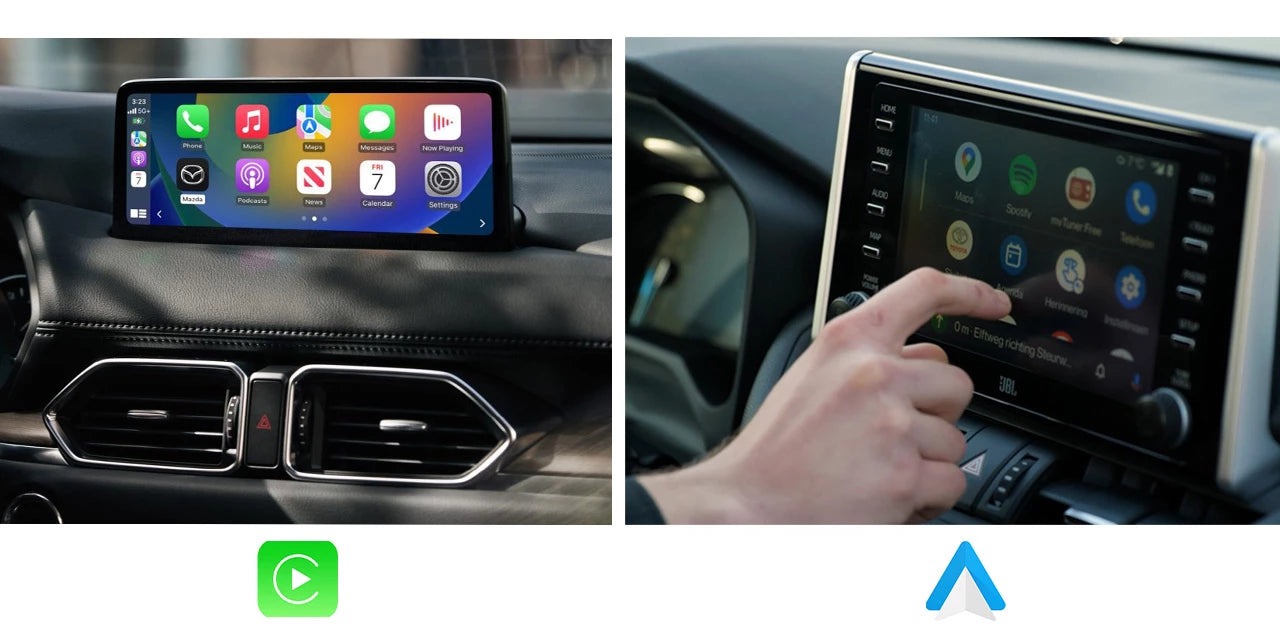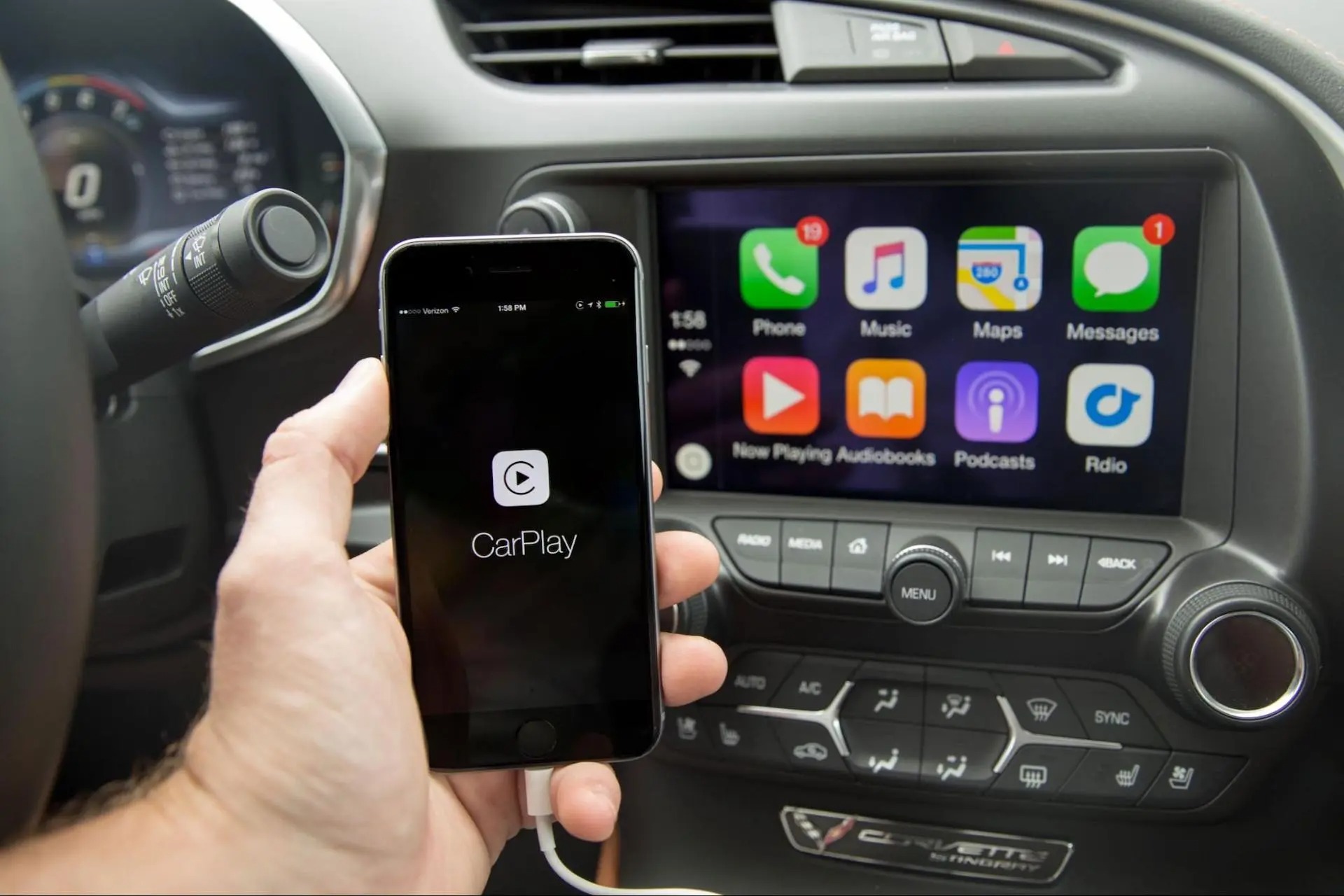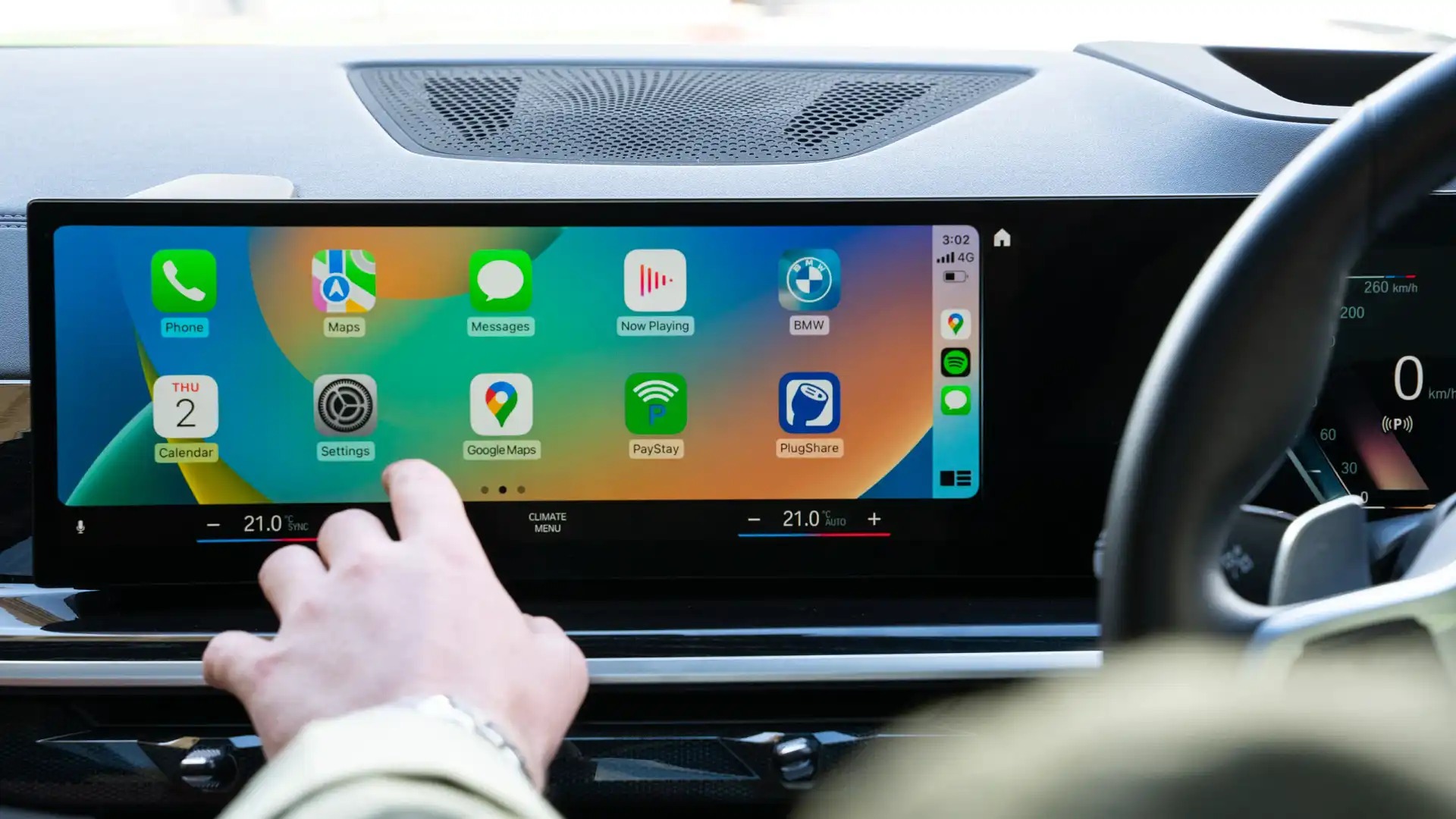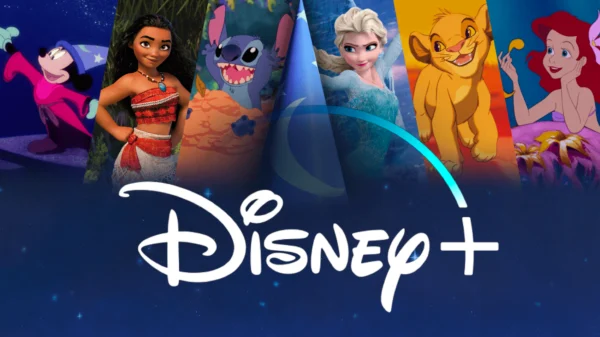Smartphone integration has become an essential part of the modern driving experience, allowing drivers to stay connected without compromising safety. Two leading platforms dominate this space Android Auto and Apple CarPlay.
While they share the same core objective mirroring smartphone functionality onto a car’s infotainment system they each take a different approach based on their respective ecosystems.
Designed to minimize distractions and simplify in-car smartphone use, these systems enable access to navigation, calls, messages, music, and more through intuitive touchscreens or voice commands.

Choose your ecosystem and take control on the go (Photo: Getty Images)
Although both Android Auto and Apple CarPlay provide safe access to mobile apps on the go, their functionality, compatibility, and user experiences differ. Whether you’re an Android or iPhone user, understanding how these systems perform, and what features they offer, can help you make the most of your in-car tech experience.
The choice between Android Auto and Apple CarPlay eventually comes down to the type of smartphone you use but the differences go deeper when you examine interface design, supported apps, voice assistant capabilities, and navigation performance.
Device Compatibility and Setup Requirements
The most fundamental difference between Android Auto and Apple CarPlay lies in the devices they support. Android Auto is exclusive to smartphones running Android, while CarPlay only works with Apple iPhones.
Android Auto requires a device operating on Android 8.0 (Oreo) or higher, but wireless Android Auto only works with Android 11 and later. Wireless mode is supported in many new cars but still requires manufacturer support and a compatible phone.
On the other hand, Apple CarPlay supports any iPhone from the iPhone 5 onward running iOS 7.1 or above. Wireless CarPlay became available with iOS 9, and it is more widely available in vehicles compared to Android Auto’s wireless option.
Pairing is typically easy on both systems; either plug the phone in via USB or connect wirelessly, depending on what your car supports. Once connected, the system loads automatically, with most vehicles now defaulting to the last used interface.
For shared vehicles or households, many modern cars support both platforms, allowing drivers to switch depending on the device they use. However, a small number of vehicles may only support one system, particularly CarPlay, which has a broader level of integration in some luxury or older models.
Interface Design and Visual Layout
User interface is where many drivers notice the first major differences between Android Auto and CarPlay. While both provide a user-friendly layout designed to minimize distractions, they approach customization and layout differently.
Android Auto offers more flexibility. The latest version of its interface includes a customizable app launcher where users can pin their most-used apps, reorder them, or hide those they don’t need.
Android Auto also supports split-screen mode on supported vehicles, letting you view navigation and music apps simultaneously. The interface adjusts dynamically to different screen sizes and orientations and supports both dark and light themes depending on time of day or user preference.
Apple CarPlay features a more polished but less customizable layout. It uses a fixed-grid system similar to the iPhone’s home screen and offers a dashboard view that displays navigation, music, calendar events, and Siri suggestions all on one screen.
While CarPlay’s home screen can be rearranged from the iPhone’s settings, the options are more limited compared to Android Auto. The visual layout is designed for clarity and consistency across vehicles, but it doesn’t support multi-window views or split-screen multitasking.
In terms of aesthetics, Apple CarPlay tends to feel more unified, while Android Auto’s layout caters more to personalization and functional multitasking. If you prefer a system you can tweak to fit your habits, Android Auto offers more control. If you want something clean, predictable, and consistent, CarPlay holds its own.
Navigation and Mapping Features
Navigation is one of the primary reasons drivers use these platforms, and both systems excel in this area, but Android Auto offers an edge in flexibility and control.
Android Auto defaults to Google Maps, widely regarded as one of the best mapping applications available. It supports real-time traffic updates, lane guidance, alternate routes, and integration with Google Assistant for voice-controlled destination input.
You can also use Waze, another Google-owned app that offers crowd-sourced traffic alerts and navigation. Switching routes in Google Maps is seamless suggested routes are shown on-screen, and drivers can simply tap on an option to change direction.
CarPlay, by default, launches Apple Maps, which has improved substantially over the years but still lags behind Google Maps in some areas. Apple Maps features clean graphics, traffic data, and integration with Siri, but changing routes requires using small on-screen arrows, then manually selecting from a separate list of options an awkward process while driving.
Fortunately, CarPlay now supports third-party navigation apps like Google Maps and Waze, giving iPhone users access to more robust mapping choices. Despite that addition, Android Auto’s tighter integration with Google Maps, faster responsiveness, and more intuitive user input make it a better experience for navigation-heavy users.
Voice Assistant Capabilities
Both platforms are designed to encourage hands-free operation via voice assistants, but here, Google Assistant has a clear upper hand over Apple’s Siri in terms of performance, accuracy, and versatility.
Google Assistant in Android Auto supports natural language processing and handles complex queries more reliably. It’s capable of interpreting context, such as “Drive to the nearest coffee shop with drive-thru,” or “Text Sarah that I’ll be 10 minutes late and reschedule the meeting.”
In 2024, Google enhanced Assistant with Generative AI, which now allows it to summarize long messages and suggest intelligent replies, reducing the need to manually interact with the system.
Siri in CarPlay works well for basic tasks like navigation, calling, and messaging. However, it still struggles with less structured voice inputs. Siri also has limited integration with third-party apps, which can make voice commands inconsistent depending on what service you’re using.
For instance, asking Siri to “play the latest episode of my podcast” may work with Apple Podcasts but not with Spotify or Overcast unless pre-configured.
If voice control is central to your driving experience, especially for texting, directing, and scheduling, Android Auto’s Google Assistant offers a smoother and more capable experience.
Supported Apps and Ecosystem Integration
Both platforms support a wide variety of third-party apps, including music streaming services, podcasts, audiobooks, and messaging apps. However, Android Auto provides slightly broader support, particularly with third-party navigation and communication apps.
Android Auto supports services like Spotify, Amazon Music, Audible, Telegram, WhatsApp, and even lesser-known apps like Pocket Casts or iHeartRadio. It integrates seamlessly with the Google ecosystem Calendar, Messages, Google Podcasts, and more—without needing extra setup.
Apple CarPlay has an excellent list of supported apps as well, and it has seriously improved support for non-Apple software. Google Maps, Spotify, WhatsApp, and several other major apps work reliably with CarPlay.
However, CarPlay still limits access to some system-level functions unless apps are optimized specifically for iOS, and only Apple Music offers complete integration for music with voice and touchscreen controls.
It’s worth noting that Android Auto doesn’t support any Apple apps, with the exception of Apple Music. iPhone users on CarPlay can still access many Google apps like Google Maps and Google Podcasts.
Performance and Experience
Both systems are now mature, stable, and perform reliably in day-to-day use. Connection speed is fast, especially when using USB, and wireless support has become more stable in recent years.

Your favorite apps ride shotgun with seamless integration (Photo: Alamy)
CarPlay has long had the edge in wireless adoption, but Android Auto has narrowed the gap, and most new cars offer both wireless and wired options for both platforms.
Both Android Auto and CarPlay are updated regularly. Android Auto updates come through the Google Play Store, while CarPlay’s updates are bundled with iOS updates.
That makes CarPlay improvements less frequent but often more polished. Android Auto changes can be more experimental and responsive to feedback, which benefits users looking for cutting-edge features.
Final Verdict: Choose What Matches Your Phone, But Consider the Extras
However, your choice between Android Auto and Apple CarPlay is tied to the phone you own. If you’re deep into the Google ecosystem and prefer greater customization, app diversity, and a smarter voice assistant, Android Auto is the better fit.
If you’re loyal to Apple products and value a seamless, polished interface with robust privacy and consistency, CarPlay is a natural choice.
For users with both types of phones in a household or business setting, it’s reassuring that most new vehicles support both platforms.
As each system continues to evolve, with updates focused on personalization, AI, and better third-party support, drivers can expect even more enhancements to the connected driving experience in the years ahead.
























